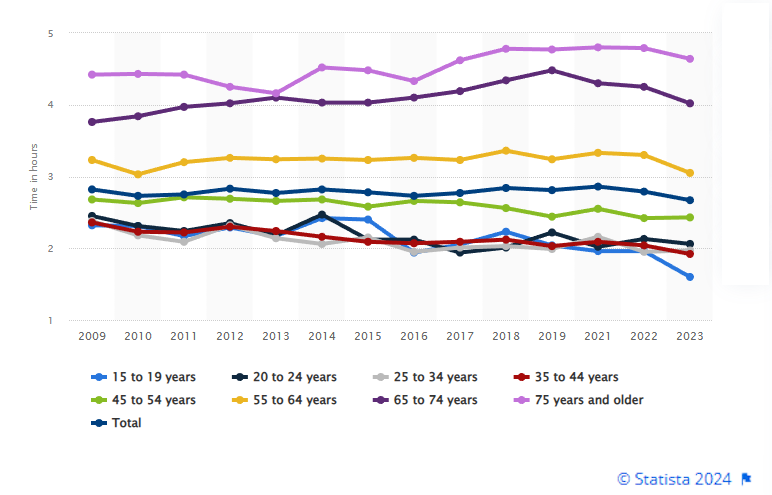Marketing to Seniors: Effective Strategies for a Growing Demographic

The global population is aging. This is particularly true for the United States. Marketing to seniors has become an essential focus for businesses looking to tap into a lucrative and growing market. Seniors, particularly the baby boomer generation, are a diverse group with distinct preferences and behaviors. Successfully reaching this demographic requires understanding the channels they prefer, crafting messages that resonate, and being mindful of the sensitivities around aging. The following is a succinct yet comprehensive guide to help business owners effectively market to seniors.
Understanding the Senior Market
The senior market is evolving. Baby boomers, those born between 1946 and 1964, are now entering their senior years. This generation is more tech-savvy, health-conscious, and financially secure compared to previous generations. As they transition into retirement, their consumption patterns, preferences, and expectations are reshaping the senior market.
Key Channels for Reaching Seniors
1. Traditional Media
While the younger population may be moving away from traditional media, seniors still engage heavily with it. Key channels include:
Television: Many seniors spend a considerable amount of time watching TV. Advertisements during prime time, especially on news and entertainment programs, can be highly effective. In 2023, 50% of seniors were cable subscribers; this is compared to 41% of those aged 45-64, 35% of those 35-44, and 34% of those 18-24 (1). As seen in the chart below, seniors also spend considerably more time watching TV than other age groups (2):

- Print Media: Newspapers and magazines remain popular among older adults. Local newspapers, lifestyle magazines, and publications focused on health and wellness are particularly impactful. While print readership levels are declining across all age groups, print media remains most viable among the senior demographic. In 2022, 30% of 60+ year-olds were frequent physical newspaper readers, while this number was only 15% for those aged 18-29 (3).
- Radio: Seniors often listen to the radio, whether it’s for music, talk shows, or news. Local radio stations can be a valuable medium for reaching this audience.
2. Digital Media
Contrary to popular belief, seniors are active online. Baby boomers, in particular, are embracing digital technology at an unprecedented rate. Key digital channels include:
- Social Media: Platforms like Facebook are widely used by seniors to stay connected with family and friends. In fact, Facebook is the most used social media platform among seniors. It has a 71% adoption rate with those over the age of 50 (4). Targeted ads and engaging content on social media can drive significant engagement.
- Email Marketing: Many seniors check their emails regularly. Well-crafted email campaigns can provide personalized offers, updates, and valuable information directly to their inbox. A whopping 85% of internet users aged 65+ report using this communication method (5).
- Websites and Blogs: Seniors often search for information online. Having a user-friendly website and informative blog can attract and retain senior customers.
- Connected TV: While 18-34 year-olds make up the biggest segment of CTV viewers, this is an emerging space for seniors. Currently, 27% of people aged 55+ watch CTV videos every day (6).
3. In-Person Engagement
- Community Events: Seniors appreciate face-to-face interactions. Sponsoring or participating in local events, health fairs, and community gatherings can create meaningful connections.
- Workshops and Seminars: Educational events on topics like health, finance, and technology can draw senior crowds and establish your business as a trusted resource.
Crafting Resonant Messaging
1. Focus on Value and Benefits
- Health and Wellness: Emphasize products or services that promote a healthy lifestyle, such as fitness programs, nutritious food, and healthcare solutions.
- Financial Security: Highlight offerings that provide value for money, savings, or financial security. Seniors are often more cautious with their spending.
- Convenience and Ease of Use: Products and services that simplify daily tasks or enhance quality of life are highly appealing.
2. Positive and Empowering Language
- Avoid Labels: Steer clear of offensive terms like “elderly” or “old.” Instead, use positive language that emphasizes vitality and independence.
- Empowerment: Craft messages that empower seniors, highlighting their active lifestyles, wisdom, and contributions to society.
3. Trust and Reliability
- Testimonials and Reviews: Use testimonials and reviews from other seniors to build trust. While only 23% of seniors consistently engage in checking reviews (6), when you integrate consumer testimonials into your marketing, you can assure it reaches your intended audience. Authentic, relatable stories can resonate deeply.
- Expert Endorsements: Leverage endorsements from trusted figures, such as healthcare professionals, to enhance credibility. Be sure to choose a person or field that is known and relatable to the senior demographic.
Sensitivity and Respect
Marketing to seniors requires a nuanced approach that respects their life experiences and preferences. Here are some tips:
- Inclusive Imagery: Use diverse and realistic images of seniors in your marketing materials. Avoid stereotypes and instead showcase a range of activities and lifestyles.
- Accessibility: Ensure your marketing materials are accessible. This includes easy-to-read fonts, clear layouts, and high-contrast colors for those with visual impairments.
- Personalization: Personalize your marketing efforts. Tailored messages and offers that reflect individual interests and needs can significantly enhance engagement.
Changing Trends: The Influence of Baby Boomers
As baby boomers become the majority of the senior demographic, several trends are emerging:
- Increased Tech Savviness: Baby boomers are more comfortable with technology. This includes using smartphones, tablets, and smart home devices. Digital marketing strategies should incorporate mobile-friendly designs and online engagement tools.
- Health and Sustainability: This generation is more health-conscious and environmentally aware. Products and services that align with these values are likely to resonate well.
- Working into the Golden Years: Nearly 4 in 10 baby boomers are either full-time employees or self-employed. When it comes to this generation, do not assume that “senior” equates with “retired!”
Conclusion
Marketing to seniors is both a challenge and an opportunity. By understanding their preferred channels, crafting resonant messaging, and being sensitive to their unique perspectives, businesses can successfully tap into this dynamic and growing market. As baby boomers continue to redefine what it means to be a senior, staying adaptable and responsive to their evolving needs will be key to long-term success. Embrace these strategies to connect with seniors in meaningful ways and to build lasting relationships.
At Ciniva, we are well-versed in targeting a variety of different audiences, including seniors. Contact us today to discuss formulating the perfect strategy to connect with your key audiences.
Sources: